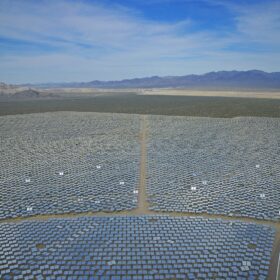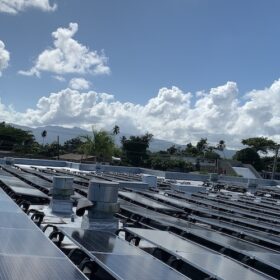Flooding and heat waves shaped solar conditions across North America in July as warmer ocean temperatures and a weaker-than-usual jet stream drove confronting weather patterns across the continent, according to analysis using the Solcast API. While Mexico and the southwestern United States saw increased sunshine, solar conditions deteriorated further north as extreme weather events complicated the holiday season and solar operations across much of the continent.

The strongest solar conditions in July were observed in the southwestern United States, where high pressure systems delivered near cloudless skies, lifting irradiance to almost 20% above average in solar-rich Nevada, Arizona and New Mexico. East of Texas, states from Arkansas to the Carolinas also outperformed seasonal expectations, seeing irradiance levels 5% to 10% above normal, despite above-average rainfall. In contrast, most of Canada endured widespread cloud cover due to a strong low pressure system, leading to below-average solar exposure.
Conditions on July 4th highlighted the east-west divide in the United States. Independence Day celebrations in the eastern and central states were affected by widespread storms and rainfall, reducing irradiance for many solar producers. Meanwhile, the western half of the country remained under the influence of a stable high pressure system, which protected it from precipitation and supported clearer skies for solar output.

Texas saw the most severe impacts from extreme weather, with flash flooding during the Independence Day weekend claiming the lives of at least 135 people. The flooding was driven by moisture drawn from the Gulf of Mexico, including remnants of Tropical Storm Barry, which stalled over the state and triggered prolonged thunderstorms. Elevated sea surface temperatures also contributed to increased atmospheric moisture across the continent, sustaining flood risks throughout the month. Tropical Storm Chantal brought flooding to the Carolinas, while New Mexico, Kansas City and parts of New York experienced similar events.

In the final weeks of July, a widespread heat dome settled over much of North America, bringing extreme temperatures from coast to coast. Although these systems typically suppress cloud cover, aiding irradiance, the high temperatures can reduce the efficiency of solar panels and complicate field operations. Over half of the population of the U.S. was under heat alerts during this period, with cities like Tampa breaking long-standing records, surpassing 100°F for the first time in 135 years of data.
Solcast produces these figures by tracking clouds and aerosols at 1-2km resolution globally, using satellite data and proprietary AI/ML algorithms. This data is used to drive irradiance models, enabling Solcast to calculate irradiance at high resolution, with typical bias of less than 2%, and also cloud-tracking forecasts. This data is used by more than 350 companies managing over 300 GW of solar assets globally.
The views and opinions expressed in this article are the author’s own, and do not necessarily reflect those held by pv magazine.
This content is protected by copyright and may not be reused. If you want to cooperate with us and would like to reuse some of our content, please contact: editors@pv-magazine.com.








By submitting this form you agree to pv magazine using your data for the purposes of publishing your comment.
Your personal data will only be disclosed or otherwise transmitted to third parties for the purposes of spam filtering or if this is necessary for technical maintenance of the website. Any other transfer to third parties will not take place unless this is justified on the basis of applicable data protection regulations or if pv magazine is legally obliged to do so.
You may revoke this consent at any time with effect for the future, in which case your personal data will be deleted immediately. Otherwise, your data will be deleted if pv magazine has processed your request or the purpose of data storage is fulfilled.
Further information on data privacy can be found in our Data Protection Policy.